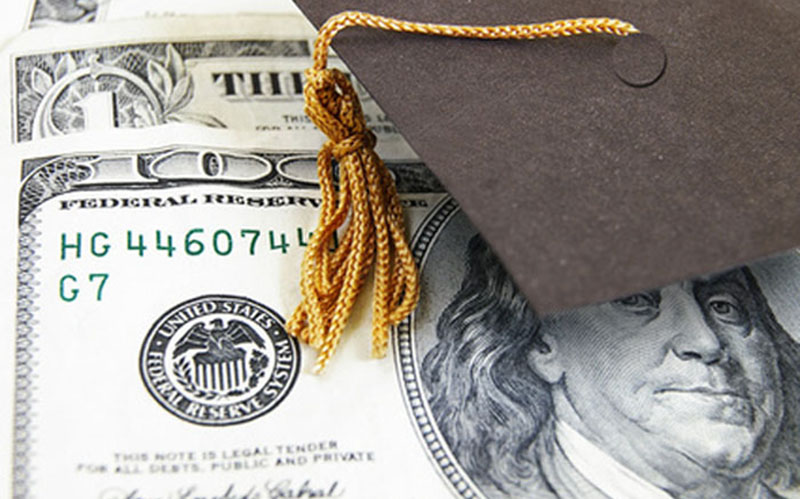WASHINGTON – Arizona tied Alaska for the lowest college completion rate in the country in 2013, with just 29 percent of students able to earn a four-year degree in six years or less, a new report says.
The report released Monday by the U.S. Department of Education also said Arizona posted the highest student loan default rate in the country, at 18 percent, compared to a national average of 11 percent.
Editor’s note
A previous version of this story may have left the incorrect impression that graduation rate projections made by Grand Canyon University were for the current year. According to data from the Integrated Postsecondary Education Data System, Grand Canyon had a graduation rate in 2013 of 30 percent and a first-year student retention rate of 59 percent that year. The story here has been revised to reflect the correct information. Clients who used this story are asked to run the correction that can be found here.
State education officials cautioned Monday that the statistics could be skewed by large numbers of students in other states who are getting degrees online from for-profit schools based in Arizona.
But U.S. Education Secretary Arne Duncan said Monday that states with higher default rates tend to have lower graduation rates and the problem has to be addressed. Just as the cost of college is higher than ever, he said, a postsecondary credential has never been more important.
Schools should offer a “meaningful, high-quality degree” at an affordable rate, Duncan said in a conference call to discuss the numbers, “and for many students, our colleges are doing just that.”
“But for many more,” he said, schools are too costly, burying students deep in debt and offering mediocre degrees.
Arizona’s completion rate was well below the national average of 55 percent. But a closer look at the numbers shows the state’s public and private colleges both posted completion rates above 50 percent, while for-profit schools in the state had a completion rate of 23 percent in 2013, below their peers nationally.
Arizona’s public college completion rate of 57 percent was 2 percentage points higher than the national public college average. And the numbers continue to improve, said an Arizona Board of Regents spokeswoman.
“Our most current data is actually 59.8 percent,” for the 2014-2015 completion rate, said Sarah Harper. “It’s a number that, on a pretty consistent level, is growing.”
Highs and lows of higher ed
Arizona tied for lowest college graduation rate in 2013, and had the highest student loan default rate, the U.S. Education Department said. The state and national numbers:
Arizona completion rates:
National completion rates:
Arizona default rate:
National cohort default rate:
She said the board, which oversees Arizona’s three public universities, thinks the schools are on track to meet a 2020 graduation target of 65.6 percent.
The state’s private schools had a completion rate of 52 percent, compared to 64 percent for the same schools nationally, the report said.
Arizona’s for-profit postsecondary schools had a 23 percent completion rate, compared to 32 percent nationally.
In terms of student default rates, Arizona schools were on par with their national counterparts. The default rate for public schools in the state and nationally was 9 percent, and at for-profit schools it was 19 percent on the state and national level. Private schools in Arizona outperformed the national average, 5 percent to 7 percent.
But combined, the state’s default rate was 18 percent compared to a national average of 11 percent.
Harper said the board of regents does not keep data on private and for-profit institutions in the state, but it is important to remember that Arizona data include students in the state as well as online students who could be anywhere.
A spokesman at for-profit Grand Canyon University said that he could not speak for other schools in the state, but “as far as Grand Canyon University is concerned, we feel very good about where we are.”
Bob Romantic said in an email that graduation rates have continued to improve at the school of “nearly 15,000 students on our ground campus and 60,000 students on line” as it has raised admission standards.
He said the federal data used for Monday’s report look “back to 2008, when GCU was near bankruptcy and had less than 900 students on campus.”
“We are obviously a totally different institution,” today, said Romantic, adding that there are “strong indicators” that the school’s default rates are improving.
Duncan said there is also good news elsewhere, pointing to several “innovative institutions” setting an example of delivering a more-affordable quality degrees.
In a speech Monday at the University of Maryland, Baltimore County, Duncan cited that school’s increased minority enrollment in science and tech majors, and he pointed to Arizona State University’s boost in minority enrollment while awarding 60 percent more degrees than a decade ago.
He also cited Vassar and Franklin and Marshall for increasing low-income and first-generation students, and Southern New Hampshire University and University of Wisconsin for making it easier for working parents and returning veterans to get degrees, according to his prepared remarks.
“Real leadership and real strategy” can make a difference in higher education, but “states have to step up,” Duncan said in Monday’s conference call.
“Higher education is a public good,” and states need to promote it as such, he said. “It’s gaining momentum.”

